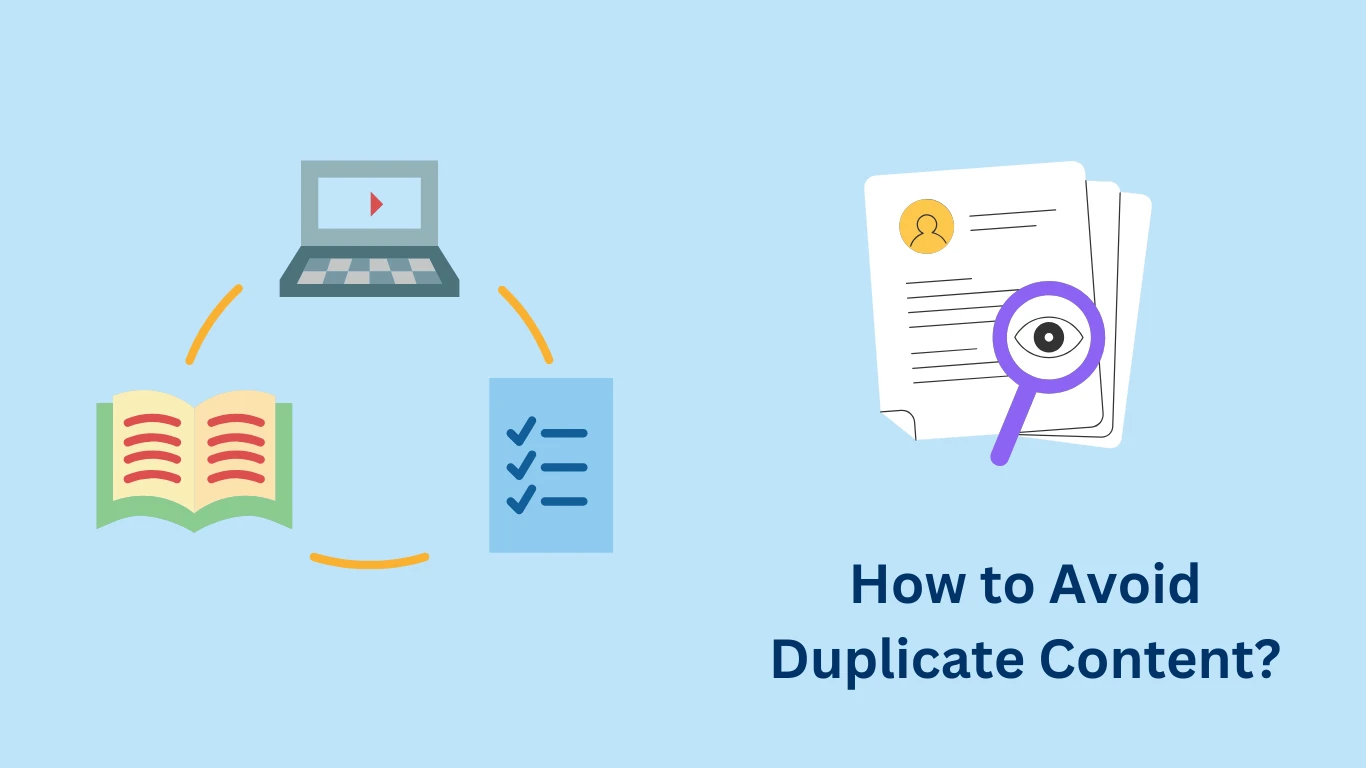How to Avoid Duplicate Content?

In the digital world, every website has only one goal – to reach as much audience as possible. And for this, the role of SEO is most important. But, sometimes there is content on your website that confuses Google. yes, we are talking Duplicate Content. If the same type of content on your website exists on different URLs or other sites, it is called duplicate content. And this can impact SEO. Let us know how you can avoid duplicate content and which tools can help you.
What is duplicate content? (What is Duplicate Content?)
Duplicate content means content that is present on more than one page. These are of two types:
- Internal duplicate content: When similar content is present on different URLs on your website.
- External duplicate content: When your content is also found on other websites.
Google aims to show content that provides the most value to its users. However, due to duplicate content, Google gets confused as to which page should be higher in the ranking. This can have a direct impact on the rank of your website. So, now the question comes how to avoid this?
How does duplicate content affect SEO? (How Does Duplicate Content Affect SEO?)
Duplicate content affects SEO in many ways, such as:
- Impact on page ranking: When the same content is on multiple URLs, Google has difficulty understanding which URL to give priority to. This reduces your page rank chances.
- Crawling Issues: Google's bots crawl every website for a limited time. If you have duplicate content on your website, it can waste crawling time.
- Link value distribution: When multiple URLs contain similar content, the link value (link juice) gets divided and this affects the ranking of any page.
Therefore, it is very important to take care of duplicate content so that your site can rank well on Google.
How to Avoid Duplicate Content
Now let us know what are some easy and effective ways to avoid duplicate content:
1. Use Canonical Tags
canonical tag (<link rel="canonical" href="URL" />) is an HTML element that tells Google what the original URL of this page is. If you have similar content on multiple pages on your website, apply the canonical tag to the URL you want to rank. Due to this Google gives priority to that page.
2. Use 301 Redirects
If you have content that spans multiple pages and you decide to prioritize one page, 301 redirects the other pages. This sends a signal to Google that which page is the original, and due to this the link value of other pages also comes to the original page.
3. Create Unique and Value-Added Content
The best way to create unique content is to understand the needs of your audience and create value-added content based on them. This will also make Google feel that your content is not duplicated, and you can improve your ranking.
4. Reduce Internal Duplication
To avoid content duplication within your website, manage URLs well. Having multiple URLs on the same page can confuse Google. Keep URL patterns in mind and use canonical tags correctly.
5. Use Google Search Console
Google Search Console alerts you about duplicate content issues. Here you can see on which pages Google has found the issue of duplicate content. Keeping this in mind, you can update your pages.
Duplicate Content Checker Tool List
To avoid duplicate content, some great tools help you tell which pages are being duplicated. Some of these tools are:
- Copyscape: This is a popular tool that scans the content of your website on the internet and provides information about any type of duplicate content.
- Siteliner: This tool checks your website's internal duplicate content and gives you a report on which pages contain duplication.
- Ahrefs: Ahrefs' Content Explorer tool scans for duplicate content and tells you where duplication is occurring in your content.
- Plagiarism Checker: This tool checks your content for plagiarism on the Internet, letting you know which content already exists elsewhere.
- Semrush: This SEO tool performs a comprehensive audit of your pages and alerts you for duplicate content.
Benefits of Avoiding Duplicate Content
There are some important benefits of avoiding duplicate content, such as:
- Better Ranking: When you have unique content on your site, Google prioritizes your website in ranking.
- Transfer of Link Value: All link value is concentrated on a single page, strengthening your rankings.
- Better User Experience: Your users see a clear and structured website that helps them navigate.
Conclusion
The issue of duplicate content may seem minor but it should be taken seriously from an SEO perspective. Even a small mistake can affect your ranking. You can avoid duplicate content by taking care of canonical tags, 301 redirects, and unique content. Plus, you can always monitor your content using the tools mentioned above.
We hope this guide has helped you understand and avoid duplicate content. To keep SEO strong, keep checking your content from time to time and always offer something new and unique to the audience.
 Some Question
Some Question